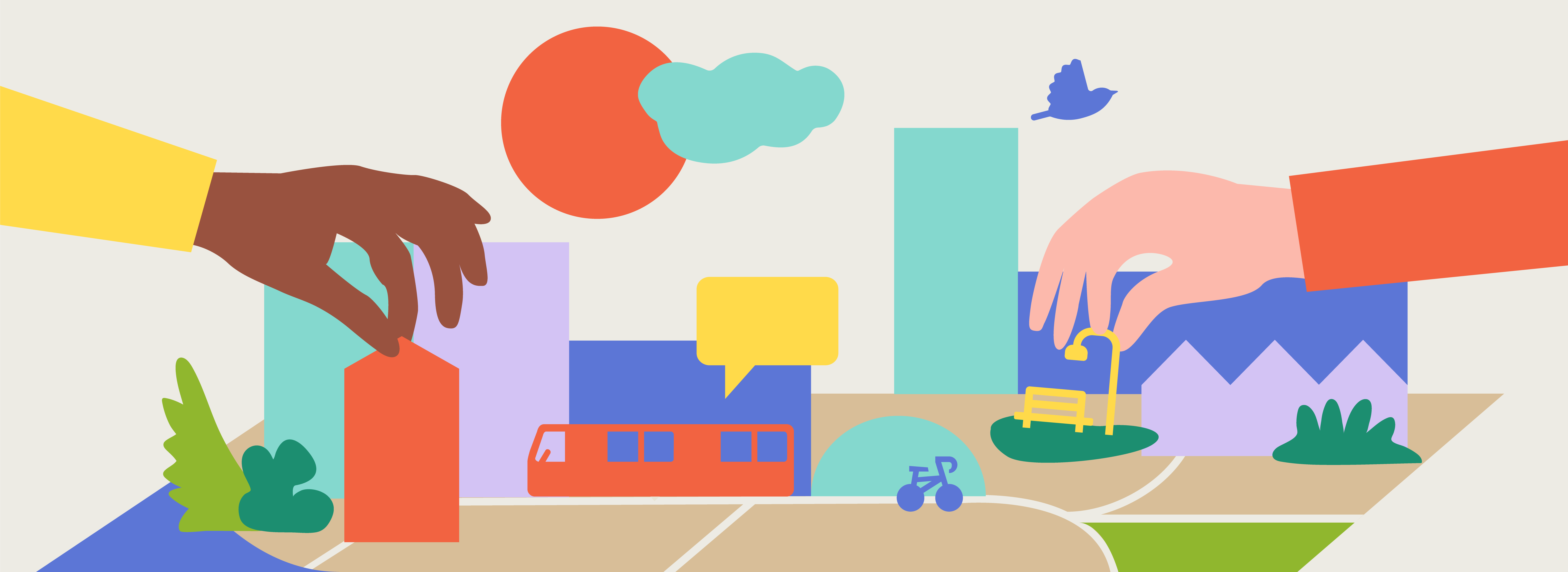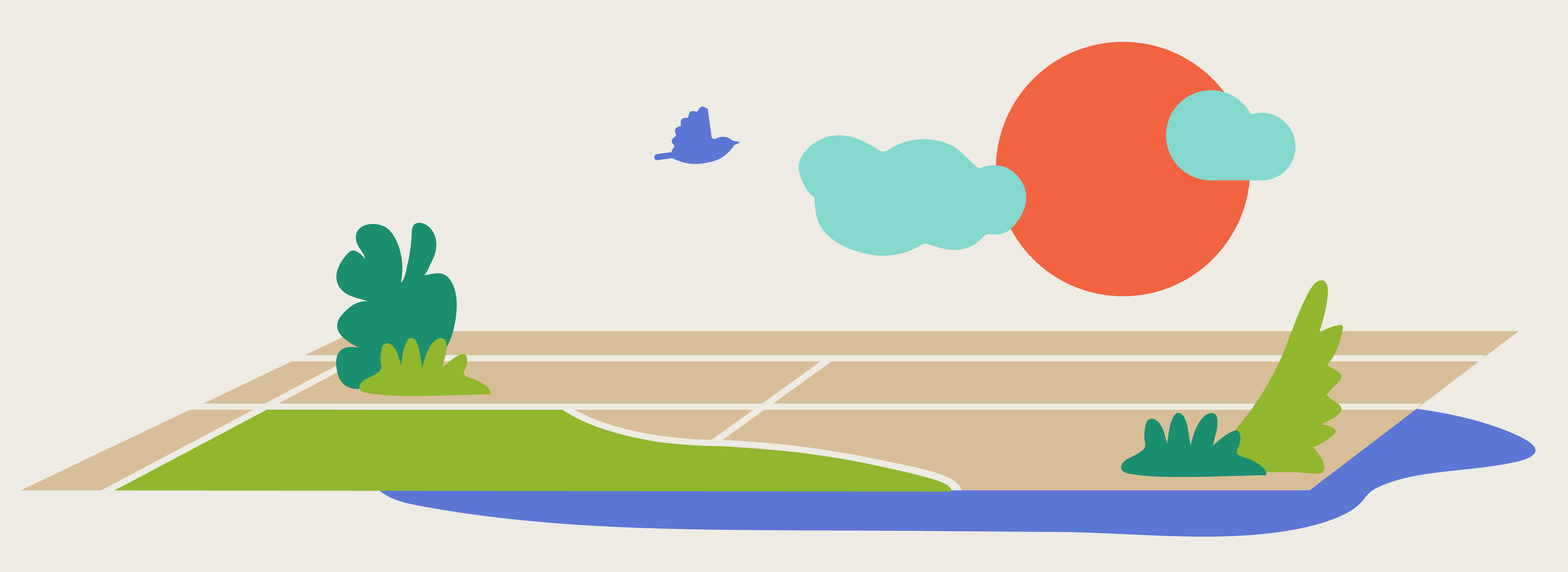Our Toronto: Past, Present and Future

Together we are creating a plan for our shared future. Help us plan for the next 30 years and beyond - from housing, to the economy, to climate change and more. Scroll down to learn more.

Recognizing the Past in Planning the Future
Let’s explore our city’s past - the history of the land, the people and the city. This will help us consider what we want for our future as we complete the Official Plan review process over the course of 2021 and 2022.
Explore Toronto
Let’s explore the neighbourhoods where we live and work today. This section explores Toronto’s population and employment based on 2019 and 2020 data. Understanding the people and jobs in the city today will help us plan for population and employment growth in the future.
Our Neighbourhoods
Toronto is made up of unique and diverse neighbourhoods that form the fabric of the city. We know that not all people define neighbourhoods in the same way.
The 158 neighbourhoods used by the City of Toronto, shown on the map, are called Social Planning Neighbourhoods . These neighbourhoods were developed to help government and community organizations with their local planning by providing socio-economic data for meaningful geographic areas.
Toronto’s neighbourhoods have changed and grown over time to make Toronto the vibrant and dynamic place it is today. Looking at the population and housing characteristics of different Toronto neighbourhoods will help us understand these areas as we plan for more people and jobs.
Let’s explore some population and housing information to learn more.
The data showing in these maps is focused on population characteristics and current housing data. This map uses 2020 Environics data for population and housing information because the last census data available is from 2016. The Environics data is useful in providing a general understanding of current conditions. The data is summarized and should be considered for general purpose only. The City will be using the 2021 Statistics Canada census data for planning purposes once available.
As we complete Our Plan Toronto we will explore the housing needs of our growing population. Where will more housing be located? What should it look like?
Where We Work
Places in the city that have lots of businesses and economic activities provide job opportunities that are important for creating a successful city. Jobs help cities grow.
These areas include commercial streets, business parks, retail centres, industrial areas and institutional spaces such as hospitals, research centres and more. These areas provide places for full-time and part-time work, and contribute to the diverse employment opportunities within our city.
Let’s take a look at where we work in Toronto today.*
*COVID-19 has changed the way we work today. The data showing in these maps does not reflect changes in where many people work since the pandemic began. This is one thing that Our Plan Toronto will explore. What is the future of job growth in our city? Where will these jobs be located?
Explore where we work in Toronto.
View the maps to learn more! Read the Toronto Employment Survey for more information on the types and locations of employment in Toronto.
Our Plan Toronto: How Do We Plan to Grow to 2051?
Our Plan Toronto will consider how and where Toronto should grow to the year 2051 in order accommodate another 700,000 people and 450,000 jobs. Through Our Plan Toronto the City of Toronto will be reviewing the Official Plan to identify policy changes needed to address growth. Our Plan Toronto also includes a review of environmental policies that will help reduce greenhouse gas emissions and address climate change adaptation and mitigation goals.
What Role Does Transportation Have In Planning for Growth?
Transportation connections have always played an important role in how cities grow. This means that how we design our neighbourhoods should support people to get where they need to go. For example, building new developments within walking distance to transit and making sure that neighbourhoods have a mix of uses to which people can easily walk or bike.
Our neighbourhoods are connected by our extensive transportation network that provides a range of options for getting around the city.
Let’s take a look at the main options for how people can move around Toronto today and in the future. Then we can think about how we want to plan for growth around these connections.
What Shape Should Our Growth Take?
The city needs to accommodate another 700,000 people and 450,000 jobs by the year 2051. Through Our Plan Toronto, we need to figure out where this growth should go, where it shouldn't go, and what it should look like.
In reviewing the existing Official Plan and looking at our growth to date, we know that...
We will continue to support growth in the centres, along the avenues, and along transit lines, but what about the places and spaces in-between? How should we grow in different ways and in different places?
There are a range of housing types that can accommodate the growth Toronto is anticipating.
What combinations make sense for your neighbourhood, and the city? Let us know by participating in the engagement process for Our Plan Toronto.
Our City. Our Future. Our Voices.
Our Plan Toronto is a year-long process to review our Official Plan with a focus on how our city will grow between now and the year 2051 to support our communities, our environment, and our economy. This includes review of environmental policies to reduce greenhouse gases, address climate change and support sustainable growth for a healthy environment.
Project Process
There are 5 steps in the work outlined here. Community input will guide this process.
Some Key Terms To Know
Here are some key terms to learn that will be useful as we talk about Our Plan Toronto.
Density and Intensification
Density refers to the number of people and jobs in a specific land area. Often people confuse density with building type, but higher density doesn’t always equal taller buildings. For example, a high-rise tower with large units sitting on a big property surrounded by a park may be lower density than a variety of lower multi-unit buildings and houses on smaller lots.
Intensification means development that increases the density of a particular site or area. It allows more people to live and work within the existing urban boundaries. This happens when we develop, re-develop, expand, and/or repurpose existing buildings or areas. Intensification can look different from neighbourhood to neighbourhood, based on characteristics such as location, history, community strengths, and preferences.
Transit-Oriented Development is an approach that places growth within walking distance of rapid transit stations. It means compact, walkable areas with a diverse mix of uses and incomes, at densities that support transit ridership. This allows people to access public transit quickly and conveniently from the places they live, work, learn, shop, and play.
Toronto has more than 180 potential Major Transit Station Areas (MTSAs) which could be designated for transit-oriented development. These are areas within an approximate 10-minute walk (500–800 metre radius) of a transit station (existing or planned). The Ontario government’s Growth Plan prescribes specific density targets for MTSAs around subways, light rail transit, and GO Transit rail stations.
The Official Plan designates areas of the city for various land uses. Employment Areas accommodate clusters of business and economic activities, including, but not limited to, manufacturing, warehousing, offices, and associated retail and ancillary facilities. These areas are set aside for commercial or industrial development, therefore protecting them from residential development. Currently, 27% of all jobs in Toronto are based in Employment Areas.
Thank you for exploring our StoryMap. Visit us at toronto.ca/ourplan for ongoing updates and opportunities to get involved.